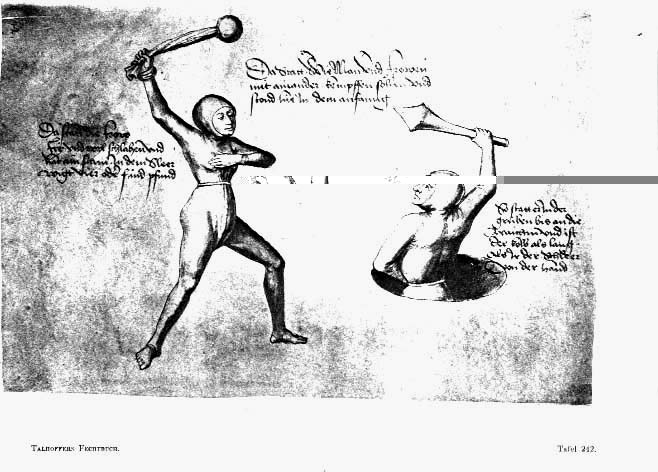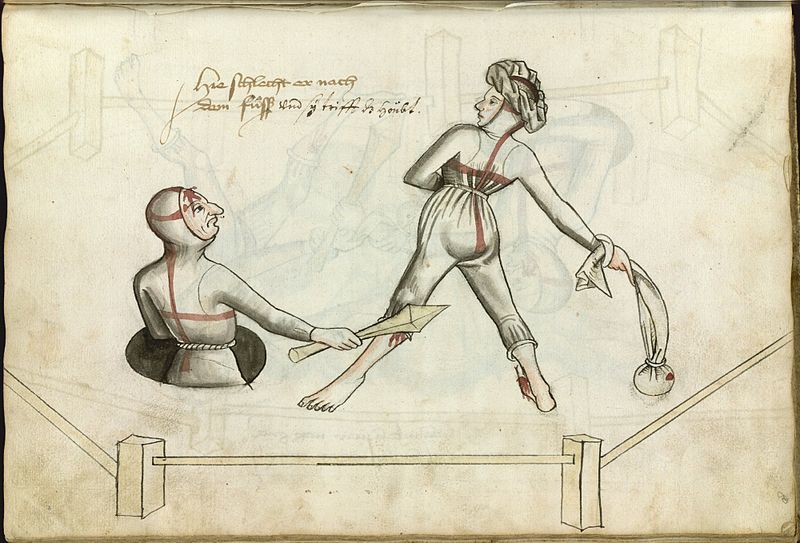Medieval German traditions were often quite odd. At least, according to our modern understanding of things. One of the most curious concepts was the marital duel which put husband and wife against each other in a fight to the death.
Medieval justice was very peculiar. I can give a quick and curious example with animal trials. Cats, dogs, bulls, caterpillars, and other creatures of God were sent to the scaffold for various offenses against humanity. Even relatively recently, in the 18th century, in France, such nonsense still continued: once a severe death sentence was passed on a cow. No less interesting is another judicial tradition of the Middle Ages – marital or conjugal duels, which were common in the Germanic principalities up to the middle of the 16th century.
Solving a legal dispute by a duel was a purely German trick. Such a thing has not been recorded either in the East, or in Greece, or in Rome, even the Anglo-Saxon judicial code, largely Germanic, was silent about such fights.
But we know that the solution of disagreements with the help of martial arts was common among the ancient Franks and other Germanic tribes. And later, it spread widely on the territory of the Holy Roman Empire of the German nation.
We know this in detail, mainly thanks to the detailed and illustrated “fighting” manuals published in the 14th and 15th centuries. One of them belongs to the pen of Paulus Kal, the other to Hans Talhoffer. But the most curious part, for me, was the marital duels.

In marital duels, as a rule, all sorts of everyday disagreements between husband and wife were resolved. They probably did not talk about unwashed dishes, but the question of adultery, the fact of which was problematic to prove, could easily become an occasion to measure strength between spouses.
As a rule, one or two months were given to prepare for a duel. During this time, the spouses had the right to make peace. If not, a special site was being prepared, in the center of which a hole was dug about half a meter deep.
The husband was supposed to be in it, and during the marital duel, he did not have the right to leave this pit – this condition was made to equalize opportunities. Another similar condition, a kind of handicap for the fair sex, was the rule of the left hand, which was tied for a man either in front, or – more often – behind his back.
That is, the husband could fight only while standing in the pit and with only one hand. At the same time, he could not even touch the edge of the pit – for this, his weapon was taken away from him. The lady had both hands untied and each could have a weapon.

Probably, in some fights, knives were used, and maybe even swords, but in the manuals that have come down to us, marital duel weapons were much more primitive: more often than not, a man and a woman fought with stones and clubs.
The wife wore a long shirt tied between her legs. A large cobblestone was placed in the long right sleeve and tied in the manner of a bag. The left sleeve could also turn into a tool, or it could remain free.
The man had less room for maneuver: his left hand was immobilized, and in his right hand there was either a stick or a stone in a sack. Later, by the way, the combat uniform for marital duels changed. The women’s shirt was replaced by a jumpsuit with hoods. However, the features of dueling uniforms could be different in different regions of Germany.
Despite the pit and the tied hand, most of the fights, as sources testify, still ended in the victory of the husbands – the physical superiority of the stronger sex affected. It was enough for a man to grab his wife by the clothes in order to drag her to his hole and complete the marital duel there.
However, the ladies at times fought very successfully – we can also see the results of women’s victories on medieval engravings. They dragged their faithful out of the pit and finished them off with a dexterous suffocation technique.
A marital duel did not necessarily have to end with the death of one of the participants, but the fate of the loser was unenviable in any case. The husband, if he was defeated, was declared guilty and his head was cut off. If a woman lost, she was buried alive.
Overall, this was a terrible practice that, to me, seems entirely pointless. How much should you hate your significant other to agree to a duel that, in each case, resulted in death?
Join the discussion and participate in awesome giveaways in our mobile Telegram group. Join Curiosmos on Telegram Today. t.me/Curiosmos
Sources:
• Janin, H. (2009). Medieval justice: Cases and laws in France, England and Germany, 500-1500. Jefferson, NC: Mcfarland.
• Ripley’s Believe It or Not!, Distasio, S., Kruse, C., Sabrina, Graziano, J., & Adrian. (2017, April 28). Trial by Combat, or Medieval Divorce Court. Retrieved November 25, 2020, from https://www.ripleys.com/weird-news/trial-by-combat/


